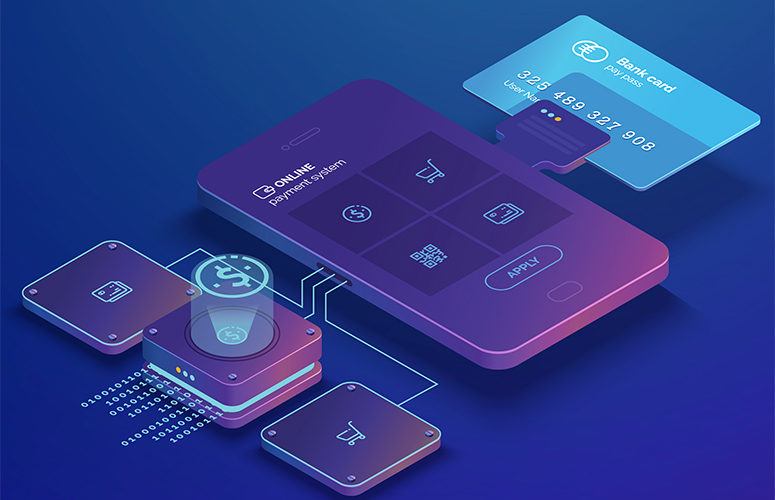
Banking: The Digital Spike
The coronavirus pandemic has pushed already emerging digital trends into warp-speed adoption by customers.
By George N. Saliba, Contributing Writer On Jan 14, 2021Digital banking services – ranging from remote deposit capture for paper checks to smartphone banking apps and digital person-to-person payments – have skyrocketed during the coronavirus pandemic, with Bank of America’s New Jersey Market President Alberto Garofalo saying that the bank’s 2020 third quarter digital person-to-person payments, for example, totaled $39 billion, up 88% when compared to same timeframe the year before.
Financial institutions report that coronavirus lockdown measures and customers’ associated public health precautions are driving the vast and rapid increase in digital services, but they say that digital trends had been well underway in a pre-pandemic world.
Joanna DiCiurcio, PNC Bank retail banking executive for Central New Jersey, says, “Based on the [rate] we were seeing for the natural adoption of [digital services] pre-pandemic, I would project that to get to this [current] level [of digital services use] we would have been looking at another three to five years, absent the pandemic. [We have] an acceleration of what was already a naturally occurring phenomenon.”
John Kamin, executive vice president/chief information officer at Provident Bank, reports that, year-over-year, his financial institution’s person-to-person payments activity increased by more than 850%, although the bank had just launched a new online and mobile solution on March 10; the next day, the World Health Organization declared that COVID-19 was a pandemic.
Kamin explains, “I would say [the overall increase in digital services by 75%] is probably a result of the pandemic at this point, but honestly, that is kind of a guess.” He notes that mobile deposits are up almost 40%, year over year.
Bank of America’s Garofalo says, overall, “[Customers] have been leveraging [digital] technologies commensurate to what we have seen across the country as a result of the pandemic. They are trying new technologies, and in many cases, they don’t have a choice. But, in other cases, they are starting to see that [the new technologies] actually make a difference and are enhancing their abilities [to] help them deal with some of the things that are happening [during the pandemic.]”
A Boon for Banks
Unlike solely brick-and-mortar retailers that have been devastated by the pandemic, financial institutions gain via online services since it is less expensive for them to service clients in this way; there are no overhead costs for heating, cooling or otherwise maintaining bank branches.
Kamin says, “Over time, if you think of concentric circles around each of our branches, what this does is really expand that circle, and you can say, ‘You know what? I don’t need five branches in this metropolitan area; I can get away with having one, because people will drive 10 minutes for something that might be more complex or to address an issue where they need to sit down with somebody. … However, to cash a check, [they will say] ‘Wait, why am I getting in a car to do this?’”
He adds, “The way we view it over time is instead of [branches] being centers of transactions, we really want branches to be centers of expertise.”
PNC Bank’s DiCiurcio notes that while digital banking, again, is soaring, customer appointments in branches in the third quarter of 2020 as compared to third quarter of 2019 increased by 15%.
She explains, “Consumers have clearly found that, in some cases, it is going to be easy and convenient for them to exercise alternate [digital] channels [for] their routine banking habits, but when it comes to seeking out a more specialized service, advice or problem resolution, they still see value in interacting in a branch, with a person.
“It has been interesting to see, and I think it points to the relevance of our branches maybe even more so, particularly around the more specialized experience and advice that we can offer,” she adds.
PNC Bank’s branch network is being evaluated for a possible hub-and-spoke model in which some branches would offer extended hours and the full complement of every service including tellering, but other locations would offer consultative services, appointments, guidance, recommendations and problem resolution, DiCiurcio says.
Pandemic Bank Operations
While the pandemic has forced bank customers to remotely use digital services, it has likewise resulted in bank employees also working from home. Provident Bank’s Kamin says that while his institution historically did not encourage employees to work remotely, within two weeks of the pandemic’s onset, he estimates that 95% of back office employees were doing so.
He says, “It proved: Yes, we can run the bank remotely, which – ignore the pandemic – just from a disaster recovery/business continuity perspective, is great.
“We had been massively pushing out laptops before [the pandemic] occurred, for no other reason than: ‘What if we have 40 inches of snow?’ Then [the pandemic] just happened: And we were not only able to keep our head above water, but [we were] actually [able to] do quite well,” Kamin says.
Bank security with remote employees has not been an issue, according to another banker, since only select employees have access to bank networks and there are layers of security surrounding the safety of customers’ data.
PNC Bank’s DiCiurcio says, “Because of this acceleration in digital services that we have seen, we have made other adaptations. I know one of the big investments that we are seeing right now within PNC Bank is building more of our virtual teams, because we recognize that consumers are relying on a call center and a chat function.”
Conclusion
With Americans’ rapid transition away from movie theaters and large gatherings and toward online services in all stripes, it remains to be seen whether the latter will remain a fully centric, permanent feature in our lives, or if people will revert to old in-person habits when the coronavirus eventually fades.
And while future online metrics for the banking industry are uncertain, digital appears poised for further growth – with no apparent end in sight.
To access more business news, visit NJB News Now.
Related Articles:





